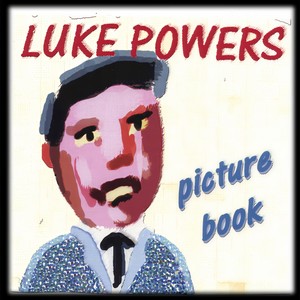
- 歌曲
- 时长
简介
PICTURE BOOK: Project Notes Luke Powers began writing a cycle of songs around the year 2000 about his coming-of-age in the South--that ghost-world with its peculiar history that is a blessing and curse to its inhabitants. He wrote songs about his childhood, running in the woods of Signal Mtn, TN, once peopled by the Cherokee ("removed" in the 1830s). He wanted to write a Thomas Wolfe or James Joyce bildunsroman in a series of three-minute songs. He wrote about first kisses in the Confederate cemetery, having a love-hate affair with an older woman "living on air." He also included his "portrait of the artist" as a young misguided songwriter on a Music Row (which had once been home to his heroes Johnny Cash, Kris Kristofferson, John Prine, Neil Young, Townes Van Zandt, Willie Nelson, Steve Earle, Dylan and Guy Clark, but had now been bought by "Corporate Country"). He wrote about making music with Tommy from the gutter of Music Row--taking Neil Young's advice that the ditch is always more interesting than the middle of the road. In the meantime he worked as a college English professor (Ph.D. in English from Vanderbilt, M.A. in folklore from UNC-Chapel Hill). He began working with Tommy Spurlock in 2002 on recording the songs which became "Picture Book." Tommy pulled together a crack group of session musicians including Randy Hardison (drums), Jim "Moose" Brown (keyboards) and Anthony Crawford (vocals, mandolin). Randy had written songs and played drums for Garth Brooks. "Moose" had worked with everyone on Music Row at one time or another. Anthony Crawford had recorded and toured with Neil Young in the '80s. Tommy played most of the guitars (and banjo, mandolin, mando-guitar, etc.) and bass. Finally, Garth Hudson, legendary keyboardist of The Band, agreed to participate on the project--lending the songs those indefinable sense of mood and presence that he gave The Band's works. The recording process began simply enough in Tommy's Train-car studio. Basic tracks were cut over several months. But then a series of tragedies struck. First, drummer Randy Hardison was killed by a mysterious blow to the head as he was checking mail at his apartment. There were rumors of an affair with a woman from Florida. Authorities later convicted the woman's husband and one of his associates of manslaughter. (CBS's "48 Hours" did a segment on Randy's story first airing in May 2006.) While Randy had completed drum tracks for most of the songs, there were still a few that needed them. Randy had done such an excellent job and in homage to his artistry, Tommy and Luke decided not to put drums on the other tracks. As Tommy said, "It just wouldn't be right." Then another tragedy struck. Tommy lost his beloved train-car studio. The circumstances were complicated and involved business and partnerships, etc., but Tommy lost the train. The Texas native decided to relocate to Austin where he would build his house/studio down the road from his pal Willie Nelson. In commemorate the work they'd done together, Luke wrote "Tommy's Going Home to Texas." The last song on the album, it was recorded at Voytek Kochanek's studio in Hendersonville and features Garth's spectral piano. The song brought tears to the eyes of both Garth and Tommy during the all-night recording session. In the meantime there was some good news. Jim "Moose" Brown went on to co-write "It's Five O'Clock Somewhere," the massive hit for Alan Jackson and Jimmy Buffett. And Anthony Crawford teamed up with Black Hawk and reunited with Neil Young for the "Heart of Gold" film (2006). Tommy finally got around to finishing his studio in Austin in late 2006 where final overdubs and mixing continued. But then another project--a timely one--intervened. Tommy had an epiphany that he and Luke should write and produce a protest album to address the insanity of the Iraq War and the general collapse of American values. Luke and Tommy collaborated on the CD "Kakistocracy" (meaning gov't by the least competent and honest). Calling the band The Spicewood Seven (after the location of Tommy's ranch-studio), Luke and Tommy brought in a wealth of talent including: 1) Jamie Oldaker (who played on Eric Clapton's classic 70s albums, with Leon Russell and The Tractors); 2) Garth Hudson (of The Band); 3) Austinite Rosie Flores; 4) Elana Fremerman James (Hot Club of Cowtown, Bob Dylan); 5) Leon Rausch (Bob Wills and the Texas Playboys). The CD was well received--Stewart Mason (AMG) said the uncompromising album made Steve Earle look like a "milquetoast" and lauded it as "the" protest album of the Iraq War (comparing it to '60s albums in protest of the Vietnam War). Kathy Coleman of (About.com) gave it two enthusiastic thumbs up, and Vin Scelsa (WFUV and Sirius Radio's "Idiot's Delight") featured the album on numerous shows. "Kakistocracy" was released on Austin Records in 2006--pushing back the release and mastering of "Picturee Book" another year. It was worth the wait: Industry veteran Bill Johnson mastered "Picture Book" at the world famous Terra Nova Sound in Austin in 2007. Bill, who has mastered alot of material, complimented Luke and Tommy on the album and said that many of the songs "haunted" him, staying with him for days afterward. Forseeing no other mishaps, the release is anticipated for Sept. 4, 2007, by Phoebe Claire Publishing. Individual songs are currently available on I-Tunes as well as on the www.phoebeclaire.com which includes illustrated lyrics. And of course you can buy the CD here on CDBaby.com. Music videos of several songs are available on YouTube.com at http://www.youtube.com/user/arturozapanini Famed Italian post-neo-realist filmmaker Arturo Antonio Zapanini directed the videos using a surrealistic graphic animation in the style of William Blake and Federico Fellini. Individual songs have already received airplay in Europe and Australia. Spencer Leigh of BBC4 has played "Cover Song (for Sgt. Pepper)" and "I Saw John Kennedy Today" has been linked to various conspiracy websites.







